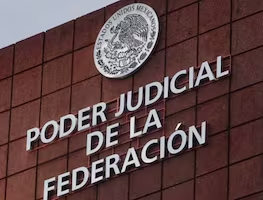Más Información

Con banda y canastas de frutas reciben a Sheinbaum en la Mixteca de Oaxaca; “llego con el corazón vibrando”, expresa

Comité Legislativo puede hacerse cargo de trabajo inconcluso: Morena; TEPJF puede dictar medidas de apremio contra PJ
Nearly 1,000 years ago, Chichén Itzá was a powerful city, home to over 50,000 persons, the ancient Mayas and the Toltecs , a civilization known for its extraordinary knowledge in Astronomy , Mathematics , and Architecture , as well as for its religious rituals.
The most outstanding archeologists say that only the surface has been unearthed about the story of Chichén Itzá; the archeological remains hide many secrets inside them. The touristic complex of over 30 structures and ancient temples hides among the trees and, as a fun fact, all the peninsula is made of limestone rock, which is interesting because, just as in cenotes , there can be secret tunnels and buildings.
The builders, sculptors, and artisans worked on the blocks, pillars, and sculptures in their quarries located not more than 500 meters inside the jungle to later be taken to the place they were needed.
Have you heard of the
?
The Temple of Kukulkán in Chichén Itzá
The Castle or Temple of Kukulkán is one of the new wonders of the world , built with millions of limestone rock blocks. It is 30 meters tall , the equivalent of a 10-stores building. On its prime, it was a sacred temple in honor of Kukulkán, the snake god.
On each side, it has steep staircases that represent the Mayan calendar and in the base, it has the heads of snakes related to the equinox. This 60,000 tonnes structure is a wonder of ancient engineering.
The Temple of Kukulkán is one of the most wonderful buildings in the ancient world. It is evidence of power , spirituality , and science . It is a very important temple and although many people think it was built as it is today, that was not the case; inside it lay the ruins of a more ancient and smaller pyramid. This temple directs to two sacred chambers, home to a jaguar throne with jade eyes and white flint teeth, as well as the famous Chac Mool statue . As in many ancient civilizations, creating a building over a previous one was the only way to construct gigantic sacred structures .
Did you know
just met the digital world?
The ancient Maya did not destroy buildings to construct their temples, they simply filled them and built over them majestic structures like the Temple of Kukulkán. The castle is built over a cenote that represents the center of the Maya multiverse and, curiously, it is perfectly located in the middle of the four cenotes: Xtoloc, Sagrado, Kanjuyum, and Holtun ; all of them perfectly aligned, in turn, with the cardinal points.
The Temple of Kukulkán is a mathematic structure related to astronomy and the agricultural cycles. Another unveiled secret is that it hides a gigantic calendar; its 18 terraces represent the 18 months of the Mayan year, 91 steps on each side are a total of 364, one per each day of the year, and twice a year, on the equinox, the Sun projects a shade so perfectly aligned in the borders of the stairs and when seen from the beginning of the phenomenon its seems as though a giant snake slithers through the main stairs. This event is called the descent of Kukulkán .
Have you heard of
?
"El Caracol," Chichén Itzá’s Observatory
Astronomy
was so important for the Maya that they even built a fascinating building to observe the movement of stars and planets. The name of this temple ("The Snail") is due to a spiral staircase inside the dome.
The main function of this observatory was to map the night sky as well as the sun’s analemma . Its location is somewhat away from the touristic complex and it is taller than the treetops.
The observatory is one of the temples most damaged by weather. It has three windows aligned in a very interesting way. The Maya designed the observatory according to the sky; the main staircase points toward Venus , one of the most important celestial bodies for the Maya; the superior part of the tower has windows that are aligned with the most northern and southern positions of Venus, and a third window aligns with the astronomical south. The corners of the platform are aligned with the Sun’s shadow in the morning and the night during the solstice .
Have you heard of the
?
As unbelievable as it may seem, at least 21 astronomical events are incorporated in this structure. The Maya used their observations to predict harvests , deaths , and even the best times to go to war .
Chichén Itzá is a city made up of land , water, and the movement of the planets , in which the buildings reflect the beliefs of its people and sacred meaning is always present. But, how does this city become so powerful and successful? It was because of its white road or sacbej that connected it with other cities through the jungle.
How to get to Chichén Itzá?
Now that you know the most important information about Chichén Itzá's archeological site , it is time to give you tips and advice to make the most out of your visit.
Traveling
is a very subjective topic since objectives, budgets, and plans are never the same.
Did you know there are more than 1,700 vestiges in the
?
If you want to go by yourself, you can rent a car in Cancún or at the airport in the same city. The average cost per day for a standard car is USD $25 plus two gasoline tanks since you will drive approximately 200km . You must also add the tolls, which are MXN $397 one way and MXN $75 per person for the entrance fee to the site, as well as an extra MXN $127 for part of the state government through Yucatán’s Fiscal Administration Agency. If you want to attend the light and sound show “Kukulkán Nights” the cost is of MXN $510 per person.
If you prefer a tour, you can take one from Cancún which costs approximately USD $45 . It includes visits to the cenotes, food, and soft drinks, as well as the access to the archeological site .
Have you heard of
?
What to see in Chichén Itzá?
Once you pay your access, you have two ways to discover this archeological site: by yourself or hiring a tour – if you choose the tour, the guide is included. The guide lasts for approximately 150 minutes .
In the Chichén Itzá archeological site you can observe the following ruins and temples:
- The Temple of Kukulkán
- The Temple of the Three Warriors
- The Thousand Columns Square
- The Great Ball Game
- "El Caracol" Observatory
- The Sacred Cenote
Have you heard of
?
Recommendations for your visit
- Wear comfortable shoes; there is a long distance to walk and the land is irregular
- Bring a lot of water for you can easily get dehydrated and it is very expensive to buy water on the site
- Bring a change of clothes if you are planning to swim in a cenote and wear biodegradable sunscreen so as not to contaminate the water. You can also bring a hat and sunglasses.
- Bring a good camera with enough battery and memory
- Do not buy souvenirs inside the site because they are 400% more expensive than outside
Did you know
will be mandatory in Yucatán?
mp








